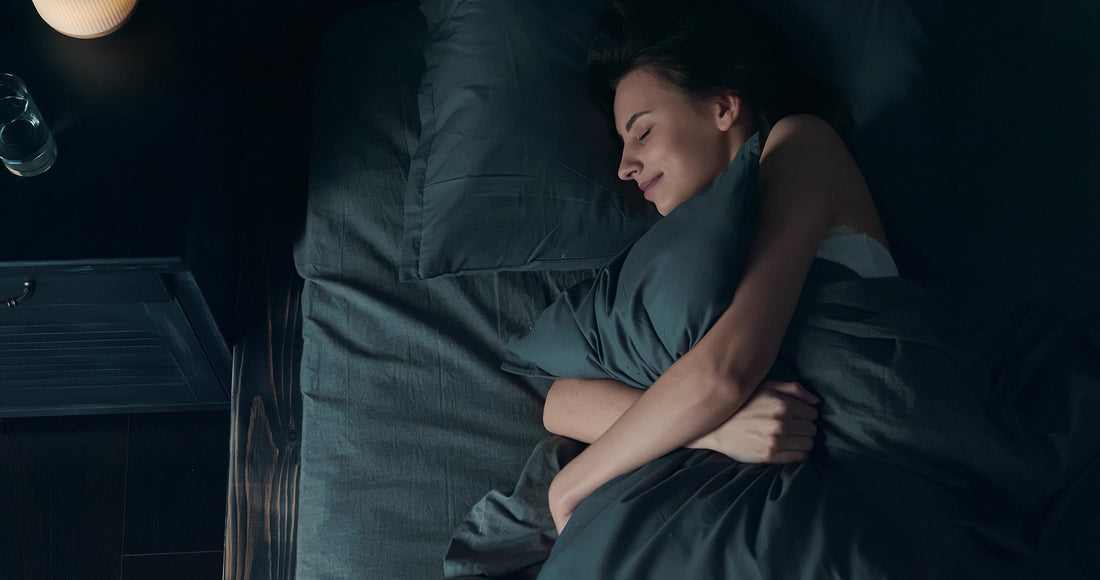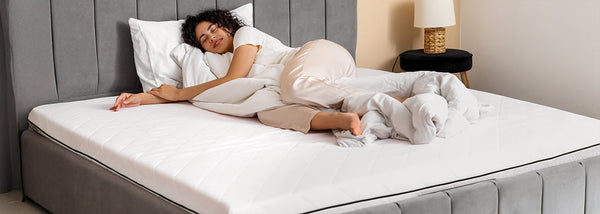Decoding Sleep Positions: Escape Unhealthy Sleep Posture Once and For All

Did it ever happen to you that you feel a sharp pain upon waking up in the morning? Or do you feel a stiffness in your body for a few minutes or hours after sleep?
Almost a third of your life is spent sleeping. And, the other two-third has much to do with your sleep quality. It influences your mood, energy, productivity, and health for sure.
Sleep is the body’s way to energise, recharge, and recover. Your body heals from an injury and everyday wear and tear when you are sleeping. Now imagine developing an injury while sleeping because of an incorrect posture!
Pain is the body’s way of saying - “I don’t like it”. And, it usually happens when you sleep in the wrong position. A poor sleeping posture continued for a long time can result in excruciating pain and long term ailments.
Is there a better sleeping posture?
Let’s understand if there is a posture that gives you better sleep than the others.
When speaking of posture, the most important parts of the body are the spine, neck, and back. A good position to sleep is when the curvature of the spine is in the neutral position.
A person either sleeps on their back, sides, or stomach. Here are a few things to understand while sleeping in all these three positions.
When sleeping on the back, the head, shoulder, pelvis, and heels should be in a straight line.
When sleeping on the side, the ear, shoulder, hip, knee, and ankle should be in a straight line.
When sleeping on the stomach, the forehead, chest, knees, and toes should be in a straight line.
Notice your posture while sleeping next time and see if the body rests in a comfortable straight line.
With that understood, let’s decode different types of sleeping positions.
Do you sleep on your back? This section is important for you!
Sleeping on the back is common. The Soldier and starfish are some typical sleeping postures among the back sleepers.
It evenly distributes the body weight and keeps it in a neutral position overall, releasing pressure from the joints and back. It is the best sleeping position for the neck and prevents the scope of misalignment.
Sleeping on the back also helps congestion relief and acid reflux.

It also helps you get up with the sun as the eyes detect light better in this position.
The face doesn’t touch the mattress or the pillow while sleeping on the back, making it an excellent posture to sleep in if you are concerned about wrinkles.
However, this position doesn’t help with sleep apnea and snoring. Sleep apnea is a condition when breathing repeatedly starts and stops.
Snoring also happens because of the obstruction in the pathway of air while sleeping.
Keep these pointers in mind when sleeping on your back:
- Although this sleeping position sounds comfortable, the lower back might suffer in the long run. This is because the toes fall at a slightly lower level than the hips and it adds a strain on the back. But, there’s an easy solution for this. Add a pillow under your knees to support your spine. Also, adding a pillow under the back can provide extra support. Or you can also use a mattress that offers differentiated support. Our Duropedic range has been crafted keeping in mind this need for differentiated support.
- Avoid sleeping on multiple pillows as it can elevate your head to an uncomfortable position, adding stress to your neck. That being said, for optimum support of the neck, avoid sleeping without a pillow as well.
- Avoid this posture during pregnancy as it adds pressure on the heart of the baby and affects the blood flow.
- Invest in a firm or a medium firm mattress based on your preference to maintain optimum support when sleeping on your back.
Here are a few common postures while sleeping on the back:
Starfish
When you sleep on your back with your arms folded upwards, it is a starfish posture. The shape appears to be resembling a starfish.
This is an excellent posture for the neck and the back (when supported with a pillow under the knee).
However, this posture is not best for the shoulders as it leaves them in an uncomfortable position. Since the hands are in the upwards direction, it adds pressure on the nerves, causing soldier pain in the long term.
If you sleep in this posture, observe if you feel a strain on your shoulders after 7-9 hours of sleep. If yes, that’s a sign you should train yourself to sleep with your hands down.
Soldier
When you sleep on your back with your hands down, parallel to the body, it is the soldier position. Your neck and shoulders are well-supported in this posture. It also supports your lower-back right, if you balance the body with a pillow under your knees.
Surprisingly, people who sleep in this position do not change their position much during the night. (Is it the discipline of a soldier?)
Knees up
Another common position while sleeping on the back is with knees bent upwards. People tend to bend their legs as it helps the body better with balance and comfort.
Back sleepers who don’t use a pillow under their knees are likely to switch to this position during the night.
However, sleeping in this posture is bad for the knees. Taking the help of a pillow to improve your posture will be helpful.
Do you sleep on the sides? Here’s what you need to know!
Sleeping on the side is the most common among all.
The curvature of the spine stays in a neutral position mostly. Hence, it is healthy to sleep in and helps with back and neck pain.
Sleeping on the side helps with snoring and sleep apnea as it gives more space for the airways to pass. Also, the brain clears out waste faster when sleeping in the side position. Moreover, it helps in conditions like Alzheimer's and Parkinson's.

If you argue which side is better, scientifically there’s an answer to it.
Sleeping on the left side helps in better digestion and lymphatic drainage. It also helps in reducing heartburn. Sleeping on the right side adds pressure to internal organs like the lungs, liver, and stomach. However, sleeping on the left should be avoided for people with heart problems.
Sleeping on your side also has a few drawbacks as well.
In absence of inadequate support, the neck and shoulders are left in a very uncomfortable position, leading to a lot of strain on the muscles.
Things to keep in mind when sleeping on the sides:
- The upper leg falls in a slightly uncomfortable position when sleeping on the sides. Support it with a pillow between your legs. Your body comes back to the neutral position.
- Prefer a thicker pillow when sleeping on your side, but still, avoid two or more pillows to escape the discomfort. Ensure the neck and the shoulders are in a neutral position.
- Doctors recommend sleeping on the left side during pregnancy, especially in the third trimester. It facilitates the blood flow, improving the circulation in the fetus. It also relieves the pressure from the growing baby, enabling its heart to pump better.
- Having a pillow under your belly adds comfort, especially during pregnancy. It also helps add side support to people who are transitioning from sleeping on their stomach to sleeping on the side.
- Invest in a medium-firm mattress to best support your side sleeping.
Here are a few common postures while sleeping on the sides:
Fetal
Sleeping in the fetal position is sleeping on the side with legs bent towards the body.
It is said to reduce the chances of snoring.
However, sleeping in a tough fetal pose might have a downside for the body. To avoid this, sleep in a loose position. Keep your legs slightly extended. Having a pillow by the side might be a great idea to escape the former situation.
Yearner
Yearner is when you sleep on your side with arms in front. Make this more comfortable by supporting the upper leg by adding a pillow between the knees.
This is a good posture overall but may add discomfort to your shoulders. Try switching the hands on the sides if you feel a strain on your shoulders after getting up.
Log
The log is when you sleep on your sides with your arms by your side. This is one of the best postures to sleep in. It supports your shoulders and spine well. Adding a pillow between your legs makes it even better.
When sleeping on the left side, this position enables good digestion as well. The only drawback is that you may find the wrinkles problem over time.
Do you sleep on your stomach? You might want to read this section!
Sleeping on the stomach is the least common among the three positions and it is generally not recommended.
This is helpful for people with breathing problems, sleep apnea, or snoring.
However, this position is extremely uncomfortable for the lower back and neck. If adequate support isn’t maintained, you might suffer from back pain in the long run.
If you are habituated to sleeping in this posture or are required to do so, don’t use any pillow under your head. This will help your neck to be in a better position.
In case of acid reflux and heartburn, strictly avoid sleeping on your stomach.
Take the help of pillows to slowly transition from this position to the side, if you are considering changing.
Things to keep in mind when sleeping on the stomach:
- Add a pillow under your belly to better support the back muscles.
- Avoid using the pillow from under the head to keep your neck in a better position.
- Try keeping a long pillow at your side and lean half of your body on the pillow. It can slowly help you change the position as you get a similar feeling of sleeping on your stomach (while hurting your spine lesser)
The most common posture while sleeping on the stomach:
Freefall position
When you sleep on the stomach with arms and legs stretched out, it’s a freefall posture. It seems you have fallen from somewhere on the top.
Avoid sleeping on a pillow to support your neck better.
Try facing the mattress to avoid your neck bending at one side for a long period of time. (Imagine turning your neck to just one side for the whole day, that’s what you do to your neck when turning it to one side for the entire night)
As we end discussing all different sleeping postures, the question arises:
Do you need to change your sleeping position?
Well, not necessarily every time.
However, you need to notice how you feel after you get up after a deep sleep.
Do you feel some stiffness, tiredness, or pain for some time? If yes, it might be a signal to consider changing the sleeping position.
Depending on the symptoms, change to the position that gives you relief.
Most of all, keeping good care of your joints, shoulders, and back is important. Because poor posture practiced over a long time can lead to severe pain after a certain point.
But, if you feel well-rested and energised without noticing any pain or stiffness, don’t bother about changing it.








